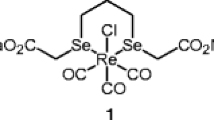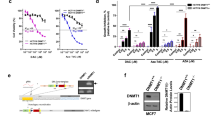Summary
We examined the relationship between intracellular levels of glutathione (GSH), glutathione-S-transferase (GST) activity, and the kinetics of DNA cross-links induced by the bifunctional alkylating drugs melphalan (MLN), chlorambucil (CLB), and mechlorethamine (HN2) in a rat mammary carcinoma cell line (WT) and in a subline selected in vitro for primary resistance to MLN (MLNr, 16-fold resistance). MLNr cells exhibit a 2-fold increase in intracellular GSH concentration and an approximately 5-fold increase in GST activity as compared with the parent cells. They are cross-resistant to a variety of drugs, including CLB (6-fold) and HN2 (14-fold). Treatment of WT cells with 30 μm MLN or CLB induced a significant accumulation of DNA-DNA cross-links for up to 8 h, which decreased over a 24-h period. In MLNr cells, no significant cross-link formation was induced by either MLN of CLB at any time between 0 and 24 h. Doses of up to 100 μm MLN failed to induce cross-links in MLNr cells. Formation of cross-links was observed immediately after treatment with HN2 in both cell lines and was followed by a subsequent decrease during a 24-h incubation in drug-free medium. At an equimolar concentration (30 μm), the mumbers of HN2-induced cross-links were significantly lower in MLNr cells than in WT cells. However, treatment of MLNr cells with 60 μm HN2 resulted in cross-link levels similar to those obtained using 30 μm HN2 in WT cells. The 35% decrease in MLN accumulation observed in MLNr cells could not entirely explain the absence of crosslinks, since thin-layer chromatographic analysis demonstrated that both cell lines accumulate a significant amount of MLN and metabolize it to the same extent. Significant amounts of MLN were also detected in nuclei isolated from WT and MLNr cells that had been treated with 30 μm [14C]-MLN. Intracellular depletion of GSH by a nontoxic concentration ofl-buthionine-(S, R)-sulfoximine (BSO, 100 μm; about 70% GSH depletion) significantly sentisized MLNr cells to MLN and increased cross-link formation. A nontoxic concentration (50 μm) of ethacrynic acid (EA, an inhibitor of GST showing some specificity for Yc/Yp subunits) also sensitized MLNr cells to MLN and increased cross-link formation. Our data demonstrate that both EA and BSO are effective modulators of nitrogen mustard cytotoxicity in tumor cells resistant to alkylating drugs. The limited number of cross-links formed in MLNr cells after treatment with MLN or even CLB suggests that efficient repair of drug-DNA monoadducts is operative in these cells and that the increases obtained in the presence of BSO and EA may be related to the involvement of both GSH and GST in drug-DNA interactions such as monoadduct repair.
Similar content being viewed by others
Abbreviations
- MLN:
-
melphalan
- CLB:
-
chlorambucil
- HN2:
-
mechlorethamine
- EA:
-
ethacrynic acid
- BSO:
-
l-buthionine-(S,R)-sulfoximine
- GSH:
-
glutathione
- GST:
-
glutathione-S-transferase
- BCNU:
-
Carmustine
- CDDP:
-
cis-diamminedichloroplatinum(II)
References
Ahokas JT, Davies C, Ravenscroft PJ, Emmerson BT (1984) Inhibition of glutathione S-transferase by diuretic drugs. Biochem Pharmacol 33: 1929–1932
Ahokas JT, Nocholls FA, Ravenscroft PJ, Emmerson BT (1985) Inhibition of purified rat liver glutathione S-transferase isozymes by diuretic drugs. Biochem Pharmacol 34: 2157–2161
Alaoui-Jamali MA, Yin M-B, Mazzoni A, Bankusli I, Rustum Y (1989) Relationship between cytotoxicity, drug accumulation, DNA damage and repair of human ovarian cancer cells treated with doxorubicin: modulation by the tiapamil analog RO11-2933. Cancer Chemother Pharmacol 25: 77–83
Ali-Osman F (1989) Quenching of DNA cross-link precursors of chloroethylnitrosoureas and attenuation of DNA interstrand crosslinking by glutathione. Cancer Res 49: 5258–5261
Beverly AB, Cucchi AC, Lee BJ, Flatow LJ, Rosowsky A, Frei E III (1986) Alkylating patterns in human cell lines. Cancer Res 46: 4379–4383
Chasseaud LF (1979) The role of glutathione and glutathione-S-transferases in the metabolism of chemical carcinogens and other electrophilic agents. Adv. Cancer Res 28: 175–274
Clapper ML, Buller AL, Smith TM, Tew KD (1978) Glutathione-S-transferases in alkylating agent-resistant cells. In Mantle TJ, Hayes JD, Pickett CB, (eds) Glutathione-S-transferase and carcinogenesis. Taylor and Francis, Philadelphia, pp 213–224
Cole SPC (1986) Rapid chemosensitivity testing of human lung tumor cells using the MTT assay. Cancer Chemother Pharmacol 17: 259–263
Das M, Singh SV, Mukhtar H, Awasthi YC (1986) Differential inhibition of rat and human glutathione S-transferase isoenzymes by plant phenols. Biochem Biophys Res Commun 141: 1170–1176
Dufour M, Panasci LC, Germain JSt, Boulet L (1985) Effects of amino acids on the transport and cytotoxicity of melphalan by human tumor cells. Cancer Chemother Pharmacol 15: 125–131
Dulik DM, Fenselau C, Hilton J (1986) Characterization of melphalan-glutathione adducts whose formation is catalyzed by glutathione transferases. Biochem Pharmacol 35: 3405–3409
Edgren M (1987) Nuclear glutathione and oxygen enhancement of radiosensitivity. Int J Radiat Biol 51: 3–6
Edgren M, Revesz L (1987) Compartimentalised depletion of glutathione in cells treated with buthionine sulphoximine. Br J Radiol 60: 723–724
Ellman GL (1959) Tissue sulfhydryl group. Arch Biochem Biophys 82: 70–77
Fram JR, Woda AB, Wilson MJ, Robichaud N (1990) Characterisation of aquired resistance tocis-diamminedichloroplatinum(II) in BE human colon carcinoma cells. Cancer Res 50: 72–77
Friling RS, Bensimon A, Tichauer Y, Daniel V (1990) Xenobiotic-inducible expression of murine glutathione-S-transferase Ya subunit gene is controlled by an electrophile-responsive element. Proc Natl Acad Sci USA 87: 6258–6262
Gi-Ming L, Ozols RF, Young RC, Hamilton TC (1989) Effect of glutathione on DNA repair in cisplatin-resistant human ovarian cancer cell lines. J Natl Cancer Inst 81: 535–539
Gralla JD, Sasse-Dwight S, Poljak GL (1987) Formation of blocking lesions at identical DNA sequences by the nitrosourea and platinum classes of anticancer drugs. Cancer Res 47: 5092–5096
Griffith OW, Meister A (1979) Potent and specific inhibition of glutathione synthesis by buthionine sulfoximine (S-n-butyl homocystine sulfoximine). J Biol Chem 254: 7558–7560
Habig WH, Pabst MJ, Jakoby WB (1981) Glutathione-S-transferase. The first enzymatic step in mercapturic acid formation. J Biol Chem 249: 7130–7139
Hamilton CT, Winker AM, Louie GK, Batist G, Behrens CB, Tsuruo K, Grotzinger RK, Mckoy MW, Young CR, Ozols FR (1985) Augmentation of Adriamycin, melphalan, and cisplatin cytotoxicity in drug-resistant and-sensitive human ovarian carcinoma cell lines by buthionine sulfoximine-mediated glutathione depletion. Biochem Pharmacol 34: 2583–2586
Jiang BZ, Bank BB, Hsiang Y-H, Shen T, Potmesil M, Silber R (1989) Lack of drug-induced DNA cross-links in chlorambucil-resistant Chinese hamster ovary cells. Cancer Res 49: 5514–5517
Ketterer B, Meyer DJ (1989) Glutathione transferases: a possible role in the detoxication and repair of DNA and lipid hydroperoxides. Mutat Res 214: 33–40
Kohn KW, Ewig RAG, Erickson LC, Zwelling LA (1981) Measurement of strand breaks and cross-links by alkaline elution. In: Freidberg EC, Hanawalt PC (eds) DNA repair: a laboratory manual of research precedures, vol 1, part B. Marcell Dekker, New York, pp 379–401
Lehnert S, Greene D, Batist G (1989) Radiation response of drug-resistant variants of a human breast cancer cell line. Radiat Res 118: 568–580
Li N, Reddanna P, Thyagaraju K, Reddy CC, Tu CD (1986) Expression of glutathione-S-transferases in rat brains. J Biol Chem 261: 7596–7599
Lowry OH, Rosebrough NJ, Farr AL, Randall RJ (1951) Protein measurement with the folin phenol reagent. J Biol Chem 193: 265–275
Ozols RF, Louie KG, Plowman J, Behrens BC, Fine RL, Dykes D, Hamilton TC (1987) Enhanced alkylating agent cytotoxicity in human ovarian cancer cells in vitro and in tumor-bearing nude mice by buthionine sulfoximine depletion of glutathione. Biochem Pharmacol 36: 147–153
Pallante SL, Lisek CA, Dulik DM, Fenselau C (1986) Glutathione conjuagtes. Immobilized enzyme synthesis and characterization by fast atom bombardment mass spectrometry. Drug Metab Dispos 14: 313–318
Panasci L, Henderson D, Torres-Garcia SJ, Skalski V, Caplan S, Hutchinson M (1988) Transport, metabolism, and DNA interaction of melphalan in lymphocytes from patients with chronic lymphocytic leukemia. Cancer Res 48: 1972–1976
Roos IAG, Thomson AJ, Mansy S (1974) Interactions of platinum compounds with dinucleotides. J Am Chem Soc 96: 6484–6498
Richon MV, Schulte N, Eastman A (1987) Multiple mechanisms of resistance tocis-diaminedichloroplatinum(II) in murine leukemia L1210 cells. Cancer Res 47: 2056–2061
Schecter RL, Woo A, Duong M, Batist G (1991) In vivo and in vitro mechanisms of drug resistance in a rat mammary carcinoma model. Cancer Res 51: 1434–1442
Smith TM, Evans GC, Doane-Setzer P, Castro MV, Tahir KM, Mannervik B (1989) Denitrosation of 1,3-bis(2-chloroethyl)-1-nitrosourea by class mu glutathione transferases and its role in cellular resistance in rat brain tumor cells. Cancer Res 49: 2621–2625
Tew KD, Clapper ML (1988) Glutathione-S-transferases in anticancer resistance. In: Woolley PV, Tew KD (eds) Mechanisms of drug resistance in neoplastic cells. Academic Press, New York, pp 141–159
Tew KD, Bomber AM, Hoffman SJ (1988) Ethacrynic acid and piriprost as enhancers of cytotoxicity in drug-resistant and-sensitive cell lines. Cancer Res 48: 3622–3625
Vistica DT, Toal JN, Rabinowitz M (1978) Amino acid-conferred protection against melphalan-characterization of melphalan transport and correlation of uptake with cytotoxicity in cultured L1210 murine leukemia cells. Biochem Pharmacol 27: 2865–2870
Wang AL, Tew KD (1985) Increased glutathione-S-transferase activity in a cell line with acquired resistance to nitrogen mustards. Cancer Treat Rep 69: 677–682
Xue L-Y, Friedman LR, Oleinick NL (1988) Repair of chromatin damage in glutathione-depleted V79 cells: comparison of oxic and hypoxic conditions. Radiat Res 116: 89–99
Zwelling LA, Michaels S, Schwartz H, Dobson PP, Kohn KW (1981) DNA cross-linking as an indicator of sensitivity and resistance of mouse L1210 leukemia tocis-diamminedichloroplatinum(II) andl-phenylalanine mustard. Cancer Res 41: 640–649
Author information
Authors and Affiliations
Additional information
This work was supported by research grants from the Cancer Research Society and the National Cancer Institute of Canada
Rights and permissions
About this article
Cite this article
Alaoui-Jamali, M.A., Panasci, L., Centurioni, G.M. et al. Nitrogen mustard-DNA interaction in melphalan-resistant mammary carcinoma cells with elevated intracellular glutathione and glutathione-S-transferase activity. Cancer Chemother. Pharmacol. 30, 341–347 (1992). https://doi.org/10.1007/BF00689960
Received:
Accepted:
Issue Date:
DOI: https://doi.org/10.1007/BF00689960




